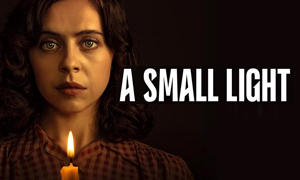The Last Full Measure: History vs. Hollywood
| REEL FACE: | REAL FACE: |
Jeremy Irvine
Born: June 18, 1990 Birthplace: Gamlingay, Cambridgeshire, England, UK | William H. Pitsenbarger
Born: July 8, 1944 Birthplace: Piqua, Ohio, USA Death: April 11, 1966, Xa Cam My, Cẩm Mỹ District, Dong Nai Province, Republic of Vietnam (shot in battle) |
Christopher Plummer
Born: December 13, 1929 Birthplace: Toronto, Ontario, Canada | Frank Pitsenbarger
Born: April 30, 1918 Birthplace: Shelby County, Ohio, USA Death: February 8, 2002, Muncie, Indiana, USA (cancer) |
Diane Ladd
Born: November 29, 1935 Birthplace: Meridian, Mississippi, USA | Alice Pitsenbarger
Born: August 25, 1922 Death: October 24, 2019 |
Had William H. Pitsenbarger always wanted to be a pararescueman?
No. The Last Full Measure true story reveals that during his junior year at Piqua Central High School in Ohio, Pitsenbarger tried to join the U.S. Army to become a Green Beret but his parents wouldn't give their permission. Having to wait until he graduated, William H. Pitsenbarger decided to join the Air Force instead. He was sent to San Antonio for basic training in late 1962. It was there that he decided to volunteer for Pararescue. He qualified immediately and was sent to pararescue training right out of basic. Upon completion of his training, he headed to Hamilton AFB in California to become part of the Rescue Squadron stationed there.
Where was The Last Full Measure filmed?
While researching The Last Full Measure fact vs. fiction, we learned that the movie was filmed in Thailand, which stood in for Vietnam. Other locations included Costa Rica, Atlanta, D.C. and Los Angeles. Actor Dale Dye, a Marine veteran of the Vietnam War, was one of several advisors on the film. Dye also portrays Senator Holt in the movie.
How did Charlie Company end up pinned down by the Viet Cong?
The Battle of Xa Cam My unfolded from April 11–12, 1966. The original intention was to lure the Viet Cong out by sending in Charlie Company alone as bait. Two other nearby rifle companies would then arrive to overtake and destroy the Viet Cong. This was part of a larger search and destroy mission known as Operation Abilene.
The companies moved in a formation, with Charlie Company on one end. However, Charlie Company had drifted from the formation. While moving through the Courtenay Rubber Plantation, Charlie Company encountered Viet Cong snipers and was soon encircled by the enemy. The other companies that were supposed to arrive as reinforcements were too far away and were slowed as they moved through the thick jungle. Thus, Charlie Company found itself in a dire situation.
Is the helicopter used in the movie the same helicopter that Pits flew on in real life?
No. The helicopters seen in The Last Full Measure movie are Hueys (Bell UH-1 Iroquois). The real helicopter that Pitsenbarger arrived on during the battle was the Kaman HH-43F Huskie (nicknamed "Pedro" for its call sign moniker). Writer and director Todd Robinson admits that this is one of the movie's biggest deviations from the true story. He says they chose to use Hueys over Pedros because of the scarcity of the latter and the cost of transporting them to Thailand. -Air Force Magazine
How did pararescueman William H. Pitsenbarger become involved in the Battle of Xa Cam My?
Pararescueman William H. Pitsenbarger flew more than 250 rescue missions during the Vietnam War. On April 11, 1966, his day off, he volunteered to board one of two Kaman HH-43F Huskie helicopters dispatched to extract a half-dozen or so wounded soldiers pinned down in a firefight near Cam My, a rural area of Vietnam located 35 miles east of Saigon. When his helicopter arrived over the battle, he was lowered through the trees.
"I saw the guy coming down through the trees," says Army infantryman Johnny Libs, "and I said 'What is he doin' comin' down here?' ... We were really in a mess on that ground and he stayed there and helped us."
Pitsenbarger immediately began tending to the wounded men on the ground. He managed to get nine of them loaded onto helicopters via a cable over the course of three flights. He would remain on the ground with 20 other soldiers while the two Air Force Huskie helicopters flew the wounded to an aid station and came back for more.
When one of the helicopters was lowering its litter basket to Pitsenbarger, it was hit by enemy small arms fire and its engine began to lose power. Instead of landing the helicopter in the middle of the battle (or crashing on top of American soldiers), the pilot knew he had to get the helicopter to safety. Pitsenbarger could have climbed into the litter basket and tried to leave with the helicopter, but he chose to stay and help the infantrymen on the ground (the pilot admitted he's not sure if he could have lifted Pitsenbarger out). He tended to the wounded, fashioning splints out of vines and constructing makeshift stretchers from saplings. He gathered ammo from the fallen, giving it to the men who were running low. He then grabbed a rifle and fought with the men to hold off the Viet Cong.
"He came there to save lives," says Army mud soldier and Purple Heart recipient Fred Navarro, "and that is what he was doin'."
How badly were the Americans outnumbered in the Battle of Xa Cam My?
The Last Full Measure true story confirms that the Viet Cong outnumbered the Americans roughly 500 to 134.
Were Pitsenbarger's actions on the ground really that heroic?
Yes. On five or six occasions, men saw Pitsenbarger run beyond the perimeter, grab a wounded soldier, and bring him back to save him. He was wounded at least twice but kept going. When he couldn't fight anymore, he continued to shout instructions to his fellow soldiers.
Did Pitsenbarger hide a wounded soldier by covering him with two dead bodies?
Yes. During the battle, the Viet Cong would sneak inside the perimeter and kill the wounded. While examining The Last Full Measure fact vs. fiction, we confirmed that Pitsenbarger pulled two dead bodies over a wounded soldier named Fred Navarro and told him to stay down. Navarro watched as Pitsenbarger took his first bullet.
To hear more about the Battle of Xa Cam My and Pitsenbarger's heroic actions, watch the video below from our YouTube channel:
Was William H. Pitsenbarger killed by Viet Cong snipers?
Yes. After choosing to remain on the ground and fight with the embattled soldiers, Pitsenbarger was wounded at least twice and then shot and killed by Viet Cong snipers later that night. While investigating the movie's historical accuracy, we learned that when the U.S. Army found his body the following day, he was still clutching his rifle in one hand and holding his medical kit in the other. There was a bullet hole in the forehead of the gas mask he was wearing.
How did the battle end?
The Battle of Xa Cam My slowed down after five hours of intense and bloody fighting. Charlie Company had formed a tight perimeter and was protected by artillery fire, which reined down at a frequency of five or six rounds every minute. Realizing that American reinforcements would likely arrive soon, the Viet Cong retreated and left the area. B Company arrived by morning, and once it was light, American helicopters returned to extract the casualties.
How many American soldiers were lost in the Battle of Xa Cam My?
Our fact-check revealed that 80 percent of the 134 soldiers in Charlie Company, 2nd Battalion, 16th Infantry Regiment were either wounded or killed by the end of the battle, which was fought over two days, beginning on the afternoon of Monday, April 11, 1966. 34 American soldiers were killed in action and 71 were wounded. Some of the wounded would die later from their injuries. The Battle of Xa Cam My is considered to be one of the most catastrophic battles of the Vietnam War. The Viet Cong reportedly left 41 dead on the field of battle and it is estimated that they removed more than 80 dead and wounded.
Was Pitsenbarger denied the Medal of Honor because of a conspiracy to keep a friendly-fire incident classified?
This is one of the reasons that the movie implies could have led to the Medal of Honor being denied. There was indeed a friendly-fire incident during the Battle of Xa Cam My (April 11–12, 1966). Charlie Company had formed a circular perimeter as they tried to hold off the Viet Cong who were surrounding them. As the perimeter began to break down and the situation grew direr, things became more chaotic when an American artillery unit mistakenly fired on them, which resulted in American deaths (it is not known who gave the unit the incorrect coordinates). Some of the artillery fire hit the tops of the trees, causing spear-like pieces to rain down on them.
In the movie, Ed Harris' character, veteran Ray Mott, states, "It was friendly fire. We were fightin' our own men." This seems to be a bit misleading since The Last Full Measure true story involved friendly artillery fire that struck their location. They weren't "fighting" their own men. The movie does clarify that it was an incident involving artillery fire, which it depicts in flashbacks.
The movie's conspiracy theory that a friendly-fire incident directly affected Airman First Class William Pitsenbarger from initially not receiving the Medal of Honor seems unlikely. We do know that Pitsenbarger's commanding officer in the Air Force immediately recommended him for the Medal of Honor, but Pitsenbarger was instead given the next highest honor for valor, the Air Force Cross (the highest honor awarded by the Air Force). The Army general who recommended the honor be downgraded said there wasn't enough documentation at the time to get an accurate picture of Pitsenbarger's heroic actions. It's possible that this is the true story, especially given that the soldiers who were there did not stay in touch and ended up scattered around the globe. They didn't reconnect until decades later after the evolution of the Internet. Further disproving the movie's assertion is the fact that another soldier who fought and died in the 1966 battle, Sgt. James W. Robinson, Jr., received the Medal of Honor in 1967, the following year.
Something more accurately focused on in the movie is the possibility that the Medal of Honor was denied in part because it was an Army operation and Pitsenbarger was part of the Air Force. As stated in the film, the Air Force wasn't supposed to be there. They volunteered to go in when the Army helicopter pilots refused because the area was too hot. Acknowledging Pitsenbarger's actions wouldn't exactly make the Army look good. If there was a conscious effort to deny the medal, this was most likely the reason. However, there's no evidence to support this theory either.
There were thousands of friendly-fire incidents in Vietnam (some estimates are as high as 8,000) and many were much worse than Cam My. In real life, there was only a rumor that the Army squelched the paperwork because they were embarrassed over the battle. In the least, the controversy has been overdramatized for the movie, which tasks an almost entirely fictional Pentagon staffer (portrayed by Sebastian Stan) with unraveling the conspiracy.
Is Pentagon investigator Scott Huffman a real person?
No. In the movie, Pentagon mid-level bureaucrat Scott Huffman leads the fight to get Pitsenbarger reconsidered for the Medal of Honor. There was no real-life Huffman. In analyzing The Last Full Measure fact vs. fiction, we discovered that the fictional character was only loosely inspired by the late historian Parker Hayes, who while working as a curator and historical writer at the Airmen Memorial Museum in Maryland from 1997 to 1999, wrote a short biography about Pitsenbarger for the museum. Soon, he found himself being contacted by fellow pararescuemen and historians, who encouraged him to seek a formal reconsideration for Pitsenbarger to be given the Medal of Honor, which most accurately characterizes his heroism. Intrigued, Hayes spoke with 12 veterans who'd served with Pitsenbarger.
"The interviews were some of the most draining and toughest experiences I have ever had," Hayes stated in his graduate school's alumni newsletter. "As they retold the worst day of their lives, I found it impossible not to become involved."
Based on what the veterans told him and other information, Hayes forwarded a Medal of Honor request to the Pentagon. As for Hayes facing any sort of pushback from the government with regards to the recommendation, that seems to be almost entirely fictional. The meddling Pentagon boss, Carlton Stanton, portrayed by Bradley Whitford, is fictional as well. However, it's worth noting that, as stated in the movie, veterans had spent roughly 30 years trying to get Pitsenbarger the Medal of Honor. Following a lengthy process, Pitsenbarger was finally given the Medal of Honor in December 2000, after Hayes had already gone on to work at the United States Holocaust Memorial Museum. In 2001, Hayes became a project director at the Smithsonian. At age 36, he died unexpectedly at his home on August 2, 2009. He lay down to take a nap after a softball game and never woke up. The cause of death was never definitively confirmed.
Are the veterans in the movie based on real people?
Not directly. While veterans of the Battle of Xa Cam My did campaign to get Bill Pitsenbarger the Medal of Honor, the veterans in the film do not appear to hold one-to-one relationships with the real-life veterans. This includes Samuel L. Jackson's character Billy Takoda, Ed Harris' character Ray Mott, William Hurt's character Tully, and Peter Fonda's character Jimmy Burr, to name a few. Some of the real-life veterans do appear in the audience at the Medal of Honor ceremony at the end of the movie.
How accurate is the dialogue in The Last Full Measure?
While much of the dialogue was dramatized, a lot of what is said by the veterans advocating for Pitsenbarger are direct quotes from some of the real veterans. This includes Charlie Company veteran F. David Peters' statement, "There was only one man on the ground that day that would have turned down a ride out of that hellhole — and that man was Pitsenbarger" (Troy Daily News). It's also true that Frank Pitsenbarger said that he regretted never being able to see his son marry and have a child because that would be the only way that his son could know how much he loved him (The Morning Call).
When was William Pitsenbarger finally given the Medal of Honor?
Pitsenbarger was awarded the Medal of Honor on December 8, 2000 at an awards ceremony in Dayton, Ohio, which was attended by 3,000 people. It had been 34 years since his death. His father, Frank Pitsenbarger, was presented with his son's posthumous Medal of Honor. Parker Hayes, the historian who'd sent in the Medal of Honor recommendation to the Pentagon and who very loosely inspired Sebastian Stan's character, was also in attendance.
Pitsenbarger was one of two men to be awarded the Medal of Honor in relation to their actions during the 1966 Battle of Xa Cam My. Sgt. James W. Robinson, Jr., who was also killed in the battle, posthumously received the honor in 1967.
Was Pitsenbarger's father really dying?
Yes. The true story behind The Last Full Measure confirms that Pits's father, Frank Pitsenbarger (portrayed by Christopher Plummer), was dying of cancer at the time his son posthumously received the Medal of Honor in December 2000. In researching the historical accuracy, we learned that Frank passed away roughly 14 months after accepting the long-awaited award on behalf of his son.
Was the Medal of Honor the first acknowledgment Pitsenbarger received for his heroism?
No. The parents of Airman First Class William H. Pitsenbarger received his Air Force Cross posthumously in 1966, five months after he was killed in the Battle of Xa Cam My. It was the highest honor the Air Force could bestow. 34 years later it was upgraded to a Congressional Medal of Honor. He was also posthumously promoted to staff sergeant.
Pitsenbarger has received a number of other honors over the years. The United States Navy Container Ship MV A1C William H. Pitsenbarger (T-AK-4638) was named after him. Various government buildings also bear his name, including the William H. Pitsenbarger Professional Military Education Center at Beale Air Force Base in California, Pitsenbarger Hall at Randolph Air Force Base in Texas, William H. Pitsenbarger Airman Leadership School at Spangdahlem Air Base in Germany, among others.
Several nonmilitary institutions were also named in his honor. The Pitsenbarger Sports Complex in Piqua, Ohio; the U.S.A.F. Pararescue Memorial Parkway (Ohio State Route 48); and the Pitsenbarger Scholarship at Edison Community College were all named entirely or partially in his honor.
Where does the title "The Last Full Measure" come from?
As stated at the end of the movie, the title comes from Abraham Lincoln's Gettysburg Address where he talks about those who have made the ultimate sacrifice, "from these honored dead we take increased devotion to that cause for which they here, gave the last full measure of devotion."
The Last Full Measure History vs. Hollywood Episode & Related Videos
Dive deeper into the movie's historical accuracy with our YouTube episode that separates the facts from the fiction.







